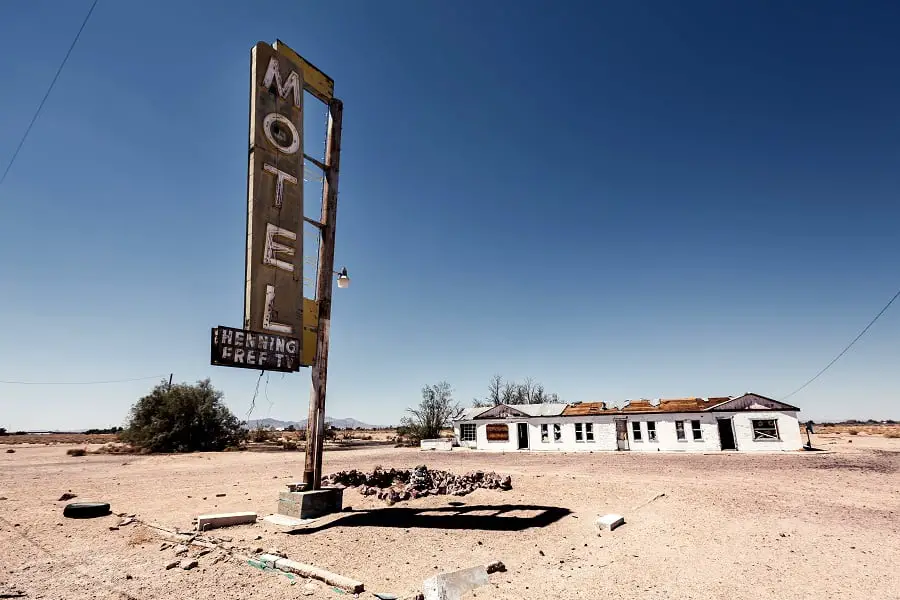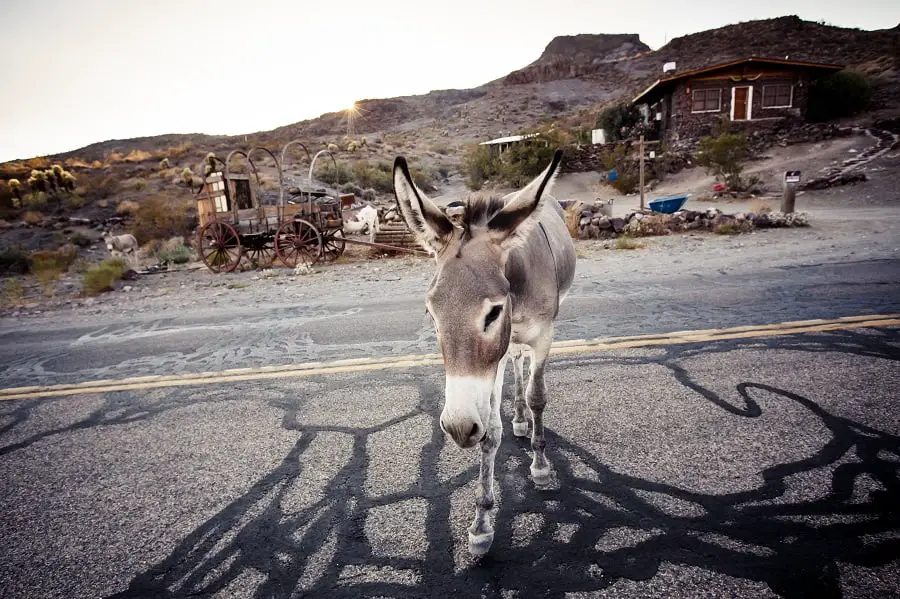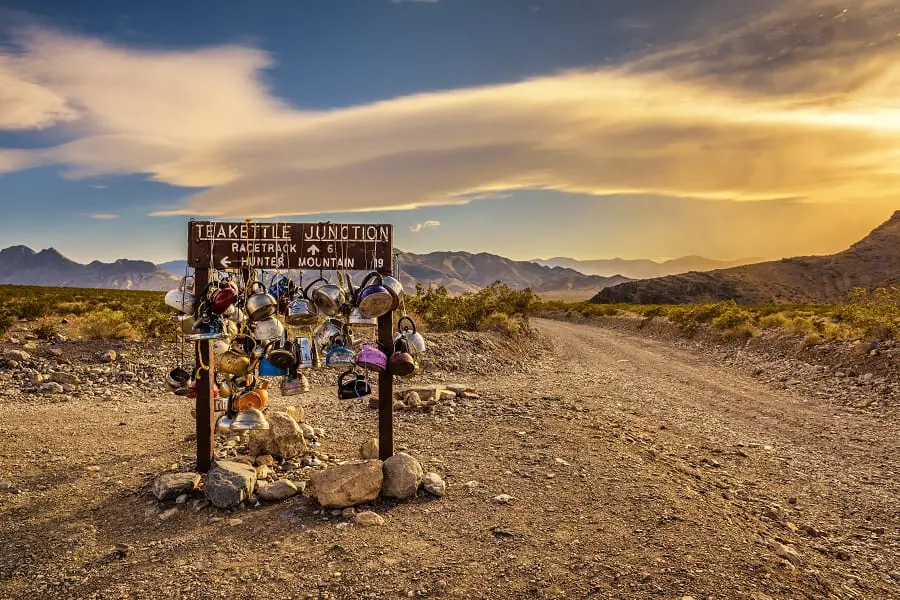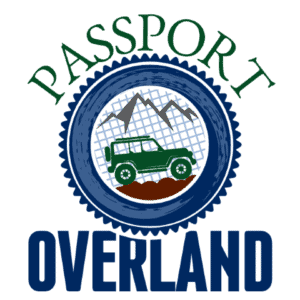
Are you planning on exploring California with your overland rig but don’t know which route to take? If you want to know which is the best overland route in California, then hop in! I’ll drive you to the most epic routes that you can only find in the Golden State.
With all of the places that you can travel to, we narrowed it down to the top three best Overlanding experiences in California. Here is how we rank them:
- The Mojave Road
- Death Valley
- Big Bear
Let’s take a look at how we got to our decision and why California is the place to go for your travel adventures.
| The Mojave Road | Death Valley | Big Bear | |
| Difficulty Level: | Easy to Intermediate | Easy to Intermediate | Intermediate to Difficult |
| Location: | Mojave Nat’l Preserve, CA | East Border, CA | San Bernardino Nat’l Forest |
| Distance: | 138 miles | 140 miles | Multiple Day Trips |
| Trip Duration: | 2-3 days | 2-4 days | 2-3 days |
| When To Go: | October to May | Late Fall/ Early Spring | Year-Round |
If this is your first Overlanding trip in California, then information on which places are best to explore in the area can help you save time in planning your adventure trip. It can also help you prepare for the kind of environment that you and your vehicle will temporarily live in.
California: The Golden State
California is the third-largest area in the United States. From the North to the South are varying terrain, elevations, and climates to suit your ideal trip. This place is home to the Sierra Nevada mountain ranges, Colorado Desert, Hollywood, Malibu, Disneyland, and the nine national parks including the famous Yosemite National Park. If you want to explore remote deserts, experience the wild in the forest, or witness the cerulean waters of the sea, then California is really the best choice.
California has a Mediterranean-like climate which means it’s warm and dry during summer, and it’s mild and wet during winter. If you’re wondering when is the best time to overland California, it’s during summer and spring for they are California’s most beautiful times of the year. Expect the temperature to be around 70 degrees Fahrenheit in summer, but you don’t have to worry about freezing temperatures in winter because it’s a rare event in California.
Preparation For Your Overlanding Trip In California
There are overland routes that only permit those that can really tackle challenging terrains. But you can also find less difficult trails that are for beginner overlanders. How then can you prepare yourself and your overland rig for extreme adventures waiting in California?
Research
There are lots of overland routes in California and lots of beautiful sceneries to explore. Research and read about them to find the one that can suit your wants and the capabilities of your overland vehicle. Trails Offroad can help you with this one.
Offline Map
Most routes in California are located hundreds of miles away from civilization. Expect that there are none to limited cellular services, so you need an offline map to navigate your way. The Best Overlanding Map App should be able to find camping sites and tell your location even in remote places.
Gear
You will need an extra vehicle battery because routes in California can take up to 4 days to explore. Add the challenging terrains, these routes can really drain the life of your vehicle. Also, prepare a tire repair kit and an air compressor in times of flat tires.
Top 3 Overland Routes in California
We have reached our destination! There are lots of routes to explore in California and each of them offers unique terrain and sceneries, so it’s really hard to choose just one. Take a closer look at each one and see which of them suits you best.
1. Mojave Road
Difficulty Level: Easy to Intermediate
Location: Mojave Road, Mojave National Preserve, California
Distance: 138 miles
Trip Duration: 2-3 days
When to Go: October to May

About the Mojave Road
Ask experienced overlanders or offroaders to recommend one route in California and the majority of them will answer Mojave Road. It’s the most popular overland route in California, probably because Mojave Road has a newbie-friendly unpaved road. If you want to challenge the sand dunes in the desert, then Mojave Road is the route you should traverse.
Mojave Road starts from Bullhead City on the Colorado River and spans through the Mojave Desert to Camp Cady. To access this road, there are two entrances. One is in the west from Barstow, California and the other one is in the east from Searchlight, Nevada. This route is first used by Native Americans as a footpath for travel and as a trade route. Along the road, you’ll get a view of Joshua trees, volcanic cones, desert valleys, lakes, and mountain passes.
The Terrain on the Mojave Road
Mojave Road is a desert landscape, so expect the majority of the road surface you have to drive on is sand. The typical terrain you have to drive on in Mojave Road is sandy, bumpy, and has rocks that can possibly damage your tires. It’s best to have all-terrain tires for your 4×4 if you plan to explore this area.
Scenery on the Mojave Road
If the desert becomes too hot to handle, Lake Mojave can be your beautiful refuge. Cool yourself off by swimming in the cold and clear waters of this lake. If you don’t want to go swimming, you can just sit at the shore and feel the cool breeze coming from the lake. If you want extreme adventures, you can go ahead to the Watson Wash and conquer the hills going to it. The Mojave Road itself is already stunning scenery, enough to please your eyes.
Obstacles on the Mojave Road
Hot temperatures and dry climate are the most challenging obstacles you have to conquer while you are on your Overlanding trip in Mojave Road. During the day it’s hot but when the night comes, it’s cold, so you better prepare for these sudden changes in temperature. The soft and fine sand dunes can be challenging if you don’t have the right PSI for your tires. The small rocks along the gravel road can cause a bumpy road but are manageable enough when you have a good quality suspension. With the presence of numerous trails along the road, you can get lost so better prepare your offline map.
Camping Spots on the Mojave Road
You don’t have to worry about where to camp in your 3 days stay on Mojave Road, for you can find lots of camping spots in the area. Mojave Bus Camp is a classic stop or a rest area in Mojave Road. You can also camp in this area but the space is limited only to accommodate 3-5 vehicles. If the area is already occupied, you can go to Lone Tree, Mid Hills, Fort Piute, and Lake Bed Lookout.
2. Death Valley
Difficulty Level: Easy to Intermediate
Location: East border in California
Distance: 140 miles
Trip Duration: 2-4 days
When to Go: Late Fall to Early Spring

About Death Valley
Without prior knowledge of Death Valley, this place seems scary and appears to be very desolate. Well, to offroaders these are the most appealing parts of this place. With its desolate nature and arid expanses, Death Valley makes it the perfect route for Overlanding. This place is originally a mining site where large deposits of borax can be found. In 1994, Congress made the 5, 269 square miles of Death Valley a national park.
Death Valley is located between the Nevada deserts and the Sierra Nevada. This place has a lot to offer from hot springs to waterfalls, from salt flats and sand dunes. This route hides a lot of beautiful places for you to explore.
The Terrain in Death Valley
Just like the Mojave Road, the terrain in Death Valley is dirty and sandy. Some trails along the road have rocks and small pebbles that can cause bumpy rides.
Scenery in Death Valley
Death Valley is 60 miles away from the civilization. This is probably why this remote place has the most undisturbed sceneries perfect for photography and relaxing. You can take a walk in the dusty grounds of Bad Water Basin located 282 feet below sea level. You can also wait for the sun to set at the top of Telescope Peak that is 11,043 feet above the ground. The cute and artful teapots in Teakettles Junctions, moving rocks or “seem-to-move rocks” in the Racetrack and the challenging rocky road of the Lippincott Pass, are just some of the best spots you can find in Death Valley.
Obstacles in Death Valley
The main challenging part in Death Valley is probably the heat. During the summer, it can be one of the hottest places on earth along with the Sahara desert. The temperature in summer can reach up to 100-120 degrees Fahrenheit, that is why it’s recommended to visit during the cold season. There is no cellular service around the area and extra fuel is needed.
Camping Spots in Death Valley
Make sure that you follow the protocols when you camp inside Death Valley. With the high temperature, fire can easily take place. You can set up your camp in Saline Valley Hot Springs, Boulder Camp, Eureka Dunes, and Furnace Creek Road Camp.
3. Big Bear
Difficulty Level: Difficult
Location: San Bernardino National Forest
Trip Duration: 2-3 days
Distance: Multiple Off-Road Day Trips
When to Go: Year-Round

About Big Bear
If you’re not a fan of the hot climate, then you can explore the Big Bear route, specifically the Burns Canyon Trail from Big Bear to Pioneertown. With the high elevation of this place, you can get a stunning view of the Yucca Valley and the entire San Bernardino National Forest. However, the road surface in this route is very challenging for beginners. But don’t worry, because there are trails in Big Bear that are beginner-friendly.
Bouldering in Big Bear
If you’re looking for extreme adventures, head up to John Bull Trail for a heart-stopping boulder crawling adventure. Make sure that your overland rig has good quality of gears for this type of terrain. With a lack of preparation, damage to vehicles and unwanted accidents can happen.
Scenery in Big Bear
If you’re a beginner, then the Butler Peak Fire Lookout is the road for you. The overland paths in this route include Snow Summit Ski Resort and Bear Mountain Ski Resort. Along the road, you’ll see beautiful forested areas and boulder outcroppings. When you get to reach the finish line, you’ll witness the spectacular view of Southern California.
What Is The Best Overland Route in California?
The Mojave Road is the best overland route in California. No wonder it’s at the top list of overland routes in the United States. Some even say it’s magical, mythical, and all in all, is a perfect route for offroad driving and camping.
Mojave Road offers lots of sceneries along the road to take pictures. The road surface can be tackled even by beginner overlanders. Also, camping sites are available in many areas. Mojave Road has the right amount of obstacles, camping sites, sceneries, and terrains to make the most adventurous overland experience.

